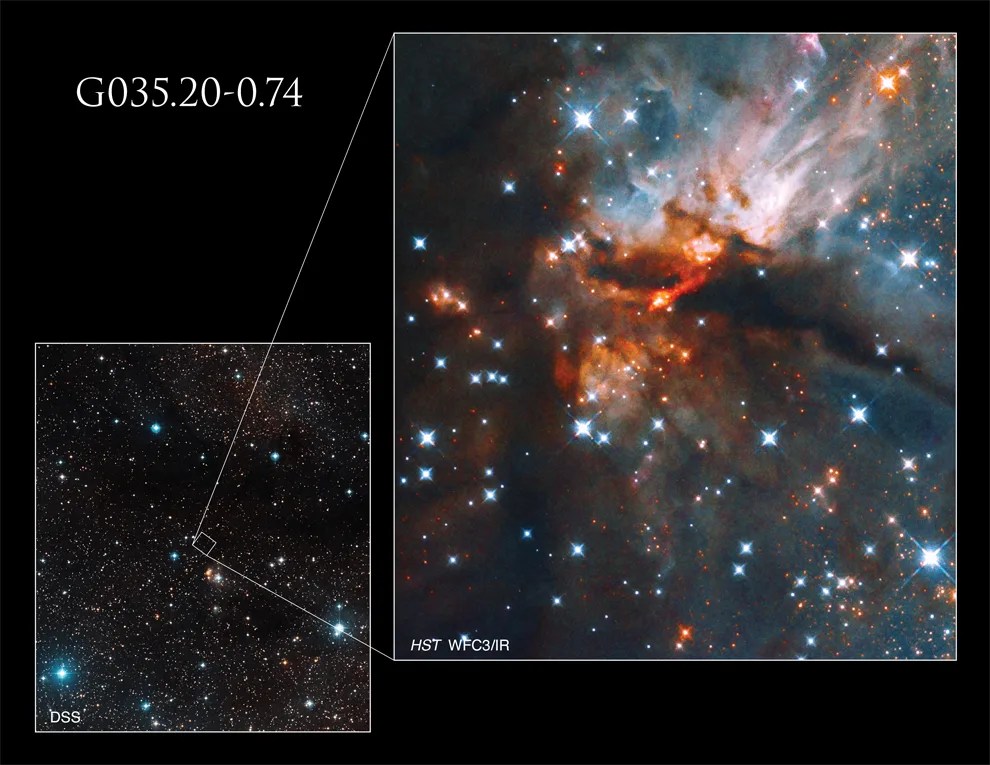Stars are born from turbulent clouds of gas and dust that collapse under their own gravitational attraction. As the cloud collapses, a dense, hot core forms and begins gathering dust and gas, creating a protostar. This star-forming nebula in the constellation Aquila, G035.20-0.74, is known for producing a particular kind of massive star known as a B-Type star. These stars are hot, young, blue stars up to five times hotter than our Sun.
Hubble observed this region because it is home to a massive protostar, specifically as part of a program examining jets of glowing gas blasted into space by massive protostars. These fast-moving jets, which form as gas collects around newly forming stars and last for only about 100,000 years, are known to play a role in star formation. Astronomers were interested to learn whether such jets influence the formation of massive stars similar to the way they affect the formation of lower-mass stars. Massive stars are typically rarer, more distant, and more hidden by dust than lower-mass stars, making studies of their jets more challenging.
Researchers combined infrared observations from Hubble with those from radio telescopes in order to see inside these dusty star-forming regions. They found a jet of material with properties similar to jets associated with young, low-mass stars. This implies that the mechanism creating the light emitted by these jets is similar in young stars of different masses, up to 10 times the mass of the Sun.
Media Contact:
Claire Andreoli
NASA's Goddard Space Flight Center
301-286-1940



































